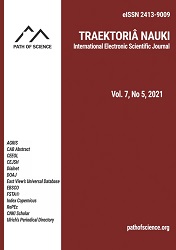Characterisation of Natural and HDTMA-Br Modified Dijah-Monkin Bentonite Clay: FTIR, XRF, XRD and SEM
Characterisation of Natural and HDTMA-Br Modified Dijah-Monkin Bentonite Clay: FTIR, XRF, XRD and SEM
Author(s): Olukayode Gideon Oloyede, Umar Omeiza Aroke, Saidat Olanipekun Giwa, Alexander Asanja JockSubject(s): Methodology and research technology
Published by: Altezoro, s. r. o. & Dialog
Keywords: Characterisation; Dijah-Monkin Bentonite Clay; Fourier Transform Infrared Spectroscopy; Hexadecyltrimethylammonium bromide; X-ray fluorescence; X-ray diffraction; Scanning electron microscopy;
Summary/Abstract: In this study, Dijah-Monkin bentonite clay was modified with a cationic surfactant hexadecyltrimethylammonium bromide (HDTMA-Br) at the level of twice the cation exchange capacity (CEC). This process results in the development of hydrophobic organoclay with an improved adsorption capacity. The clay obtained from Zing LGA Taraba State, North-East Nigeria, was beneficiated and pulverised to a particle size of 125 μm. The modification was performed without acid activation to prevent damages to the clay’s crystal structure. The organoclay was characterised for chemical composition, functional groups, mineralogical and surface morphology using X-ray fluorescence (XRF), Fourier Transform Infrared (FTIR) spectroscopy, X-ray diffraction (XRD) and scanning electron microscopy (SEM), respectively. The XRD showed an increase in the basal spacing from 15.681Å to 17.758 Å, while the XRF revealed a 5.35% concentration of Br on the modified clay, indicating successful intercalation. The FTIR spectra also revealed the appearance of symmetric and asymmetric stretching bands at 2847.7cm-1 and 2914.8cm-1, respectively, as a consequence of the modification, resulting in more sites for adsorption.
Journal: Traektoriâ Nauki
- Issue Year: 7/2021
- Issue No: 05
- Page Range: 2010-2018
- Page Count: 9
- Language: English

